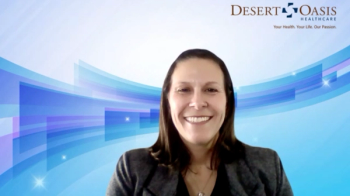
Communication Patterns in EHRs Have Surprising Impact on Outcomes for Patients With Diabetes, AJMC® Researchers Say
Casting messages widely throughout an electronic health record instead of using more focused direct messaging in diabetes care leads to more hospital visits and higher medical costs, according to a study published in the current issue of The American Journal of Managed Care®.
One of the promises of health information technology is that it can improve patient care and lower costs, combining efficiency, speed, and effectiveness among busy healthcare teams. But a new study of messaging systems in electronic health records (EHRs) found that for patients with diabetes, both hospital visits and medical costs rose the more their primary care teams used EHR indirect messaging among many team members. The study, “
The authors, Marlon P. Mundt, PhD, and Larissa I. Zakletskaia, MA, found that hospital visits increased 13 percent. In addition, medical costs rose by $223 per patient with diabetes in six months for every increase of one percentage point in indirect communication. Extending the cost analysis further, the authors write that a potential $19.2 million could be saved annually in the University of Wisconsin health system they examined. Nationally, potential savings could be as high as $10 billion, they estimated.
Teams that had direct, frequent communication between the primary care provider and one other team member had the lowest quartile of patient healthcare utilization and costs. When messages were disbursed throughout a wide group, however, healthcare costs went up and patient care quality suffered.
Analyzing EHR communication flow patterns may be a way to raise the quality of patient care while lowering healthcare costs related to diabetes, which is one of this country’s leading chronic diseases and affects 9.3% of the population. Diabetes is the seventh leading cause of death in the United States and accounts for $1 of every $3 spent in Medicare.
The authors write that there are several explanations for their findings. Perhaps how a team uses the EHR is a proxy for how well the team functions overall. It is also possible that information forwarding leads to a slower response to diabetes-related care tasks. Reverse causality is another possibility; patients who are sick may generate more information for the team to disperse, the authors wrote.
About  The American Journal of Managed Care®:
The American Journal of Managed Care® (AJMC®) is a peer-reviewed, MEDLINE-indexed journal that keeps readers on the forefront of health policy by publishing research relevant to industry decision makers as they work to promote the efficient delivery of high-quality care. AJMC.com is the essential website for managed care professionals, distributing industry updates daily to leading stakeholders. Other titles in the AJMC® family include The American Journal of Accountable Care®, and two evidence-based series, Evidence-Based Oncology™ and Evidence-Based Diabetes Management™. These comprehensive offerings bring together stakeholder views from payers, providers, policymakers and other industry leaders in managed care. To order reprints of articles appearing in AJMC® publications, please contact Gil Hernandez at 609-716-7777, ext. 139.
Contacts:
AJMC® Media:
Alexandra Ventura, 609-716-7777, ext. 121
John Patricolo, 609-325-4630, ext. 133
Newsletter
Stay ahead of policy, cost, and value—subscribe to AJMC for expert insights at the intersection of clinical care and health economics.









































